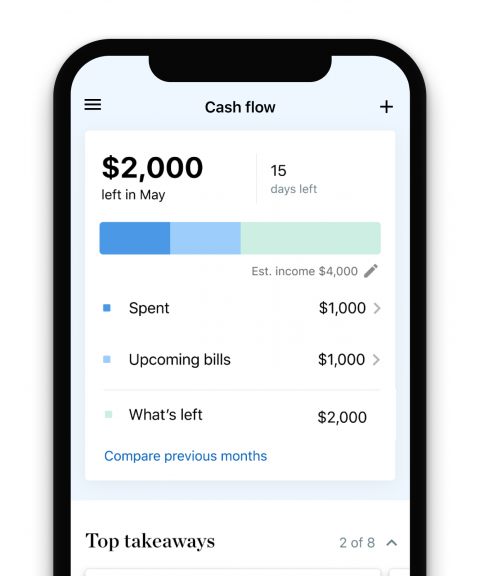Guide to Choosing a Gym: Cost and Other Factors to Consider

Many or all of the products featured here are from our partners who compensate us. This influences which products we write about and where and how the product appears on a page. However, this does not influence our evaluations. Our opinions are our own. Here is a list of our partners and here's how we make money.
If you're contemplating joining a gym, the cost of membership will likely play a huge role in your decision. To make sure you spend your money wisely, pay close attention to the gym’s offerings and think carefully about whether you even need a membership to accomplish your fitness goals.
Here’s what to know before signing up for a gym, plus ways you might be able to save on membership.
How much does a gym membership cost?
Gym memberships cost between $10 and $100 a month generally, with even some well-known names on the lower end of that range. But rates can get much higher, especially at luxury fitness clubs.
Determining the true price you’ll pay for a membership can be tricky because many gyms obscure the details. For example, some clubs require a year’s commitment with payment upfront or will tack on a sizable fee.
Here are some of the baseline membership costs we’ve seen advertised at popular gym chains:
Planet Fitness: Starts at $10 per month plus taxes and fees.
24 Hour Fitness: Starts at about $10 a month plus tax.
Crunch Fitness: Starts at $9.95 per month.
Gold’s Gym: Starts at about $30 a month.
Costs can vary greatly depending on factors like the gym’s location, membership tiers and whether you choose to pay monthly or annually. Read the fine print on a gym’s website or ask a membership representative to disclose full pricing details.

What to consider before joining a gym
The price tag is important, but it’s just one of many possible things worth basing your decision on. Here’s what else to take into account as you shop around for a gym.
Your budget
A gym’s membership cost should be considered in context. Add up the other monthly expenses you’ll need to manage, such as groceries and utility bills, to see how much room you have in your budget. This can help you learn whether you’ll have enough money for a basic or top-tier membership, or if you should hold off on signing up for the time being.
If a membership isn’t in the budget right now, consider setting money aside in a separate savings account every month until you reach your target.
The gym’s location
Convenience is key. You’ll probably feel more motivated to visit a gym that’s close to your home, work or school than one in a distant neighborhood. Explore the options in areas you already frequent.
Think about whether a chain or a standalone gym makes more sense for you. Some gyms restrict membership to one specific spot while others allow you to use it at other locations in the network. You might pursue a flexible membership if you’d like access to your gym when traveling or the option to work out at sites near both home and work, for example.
The quality of the gym
Evaluate the facilities. Does the gym have the right type of equipment for the workouts you plan to do? Is there enough equipment to accommodate a rush of gym-goers during peak hours? Are the facilities clean and well-maintained or do they seem rundown?
Pay attention to what else the gym has to offer. Maybe it serves as a larger fitness center with classes and a tennis court. Ask yourself if amenities like a sauna, swimming pool and child care services are must-haves, nice-to-haves or unnecessary.
The gym’s hours
Unless you have a flexible schedule, a gym’s operating hours are going to be a crucial part of your decision. If you can only manage late nights or early mornings, you’ll need a fitness club that’s open at those times. It’s also wise to find out whether the full range of services is available during all hours.
Alternative ways to exercise
Think about if it’s even necessary to join a gym at all. There are many free or low-cost ways to work out, such as jump roping or following along with Pilates videos on YouTube.
If you plan to use only the treadmill at the gym, you could save money by going for a daily run instead. Purchasing your own equipment often costs less over the long term too.
Alternatives won’t always make sense, though. For example, you may not have space for barbells or a stationary bike in your home. Creating a home gym can also be expensive upfront.
Your motivation
How likely are you to go to the gym if you join? Think about your reasons for wanting a membership, plus how difficult it will be to physically get yourself to the gym.
If you have a demanding job or home life, maybe you won’t realistically spend enough time at the gym to make getting a membership worth it.
On the other hand, having a dedicated place to work out surrounded by other people exercising could be exactly the motivation you need.
Trial periods
Many gyms offer free trial periods or one-day passes. Testing out a facility can help you figure out if it’s a good fit before you make a financial commitment. Take advantage of free trials or guest passes at the gyms you’re interested in, if available.
Questions to ask before signing up for a gym membership
You’ve read through the list above and decided that you do in fact want to join a gym. Make sure you fully understand what you’re signing up for first. Getting answers to these questions is a good starting point:
How much would I have to pay upfront to join the gym?
How much does a membership cost on a per-month or per-year basis, including taxes and fees?
What services and amenities are included in the membership? Personal trainers could be one example.
Am I required to sign a contract?
How can I cancel the membership?

How to save money on a gym membership
Before you enroll, look for ways to get a good deal.
Get a referral
Have a friend or relative who’s affiliated with the gym you’re eyeing? Ask them if there’s a referral offer. You could get a deal such as a lower fee, gift card or free week’s worth of membership. The person referring you might receive similar benefits as a bonus.
Piggyback on someone else’s membership
Certain gym memberships include guest privileges, and some plans are designed for family and friends to share. See if you can tag along for free or split the cost with someone.
Use employee benefits
Many companies offer a gym stipend or corporate discount. If you’re employed, ask about any fitness perks that might be available to you. If your company doesn’t provide a discount directly, it may offer a health insurance plan that covers some fitness costs.
Look for offers
Some gyms lower membership costs at certain times of the year, such as Black Friday or New Year’s. Past promotions we’ve seen include waived enrollment fees and two years for the price of one.
Another potential source of savings: your credit card. The right rewards card can help you earn points or get cash back on your membership purchase. Check out some of the best credit cards with fitness perks or see if you can get an offer through your current card.
Ask about special discounts
Some gyms offer reduced membership rates to certain groups such as students, older people or military members. Ask around to find out if you qualify for any discounts.

